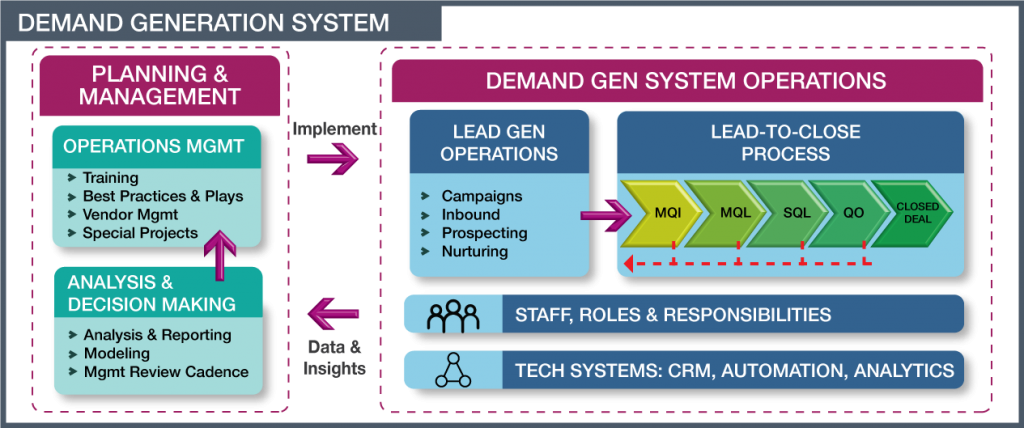The Importance of a Well-Defined Demand Generation System
Demand gen success requires well-tuned coordination of people, process, and technology. The overall set of these moving parts is your Demand Generation System — it defines the what, when, how and who of every step in the lead to close (LCP) process. A well-defined system is vital to success. At WinFirst we created the Opportunity Creation AccelerationTM Framework, a template that we use with clients to establish their high-performance demand gen systems.
Establish Your Demand Generation “Constitution”
Documenting and formalizing the system itself is crucial. This is the only way to achieve alignment of the various moving parts of the system. It’s surprising, but we’ve found that most companies fail on this step. This step requires very little cost and time compared to most other efforts, and it’s payoffs are huge. Thus, we always recommend that clients establish this core document, and revisit it from time to time. To do it correctly:
- Assign a champion/owner, and have them lead a quick effort to define each step in the LCP process, working in collaboration with the broader team.
- Ensure all key stakeholders are involved in the effort—primarily sales leadership, sales ops,the CEO, the head of finance, and the relevant marketing team members.
The outcome of this process is a document (typically PowerPoint) that serves as the “constitution” for your system. It need not be complex and shouldn’t be more than 10-12 slides. It should simply cover the primary elements in the diagram above, explaining how leads come into the system, and how they traverse through the system.
- Just as the US Constitution defines the mechanisms of government, your Demand Gen System doc defines the inner-workings of your pipeline operation.
- It serves as training material and a reference guide for current and future employees.
- Like the US Constitution, it needs strong support from the leadership team and needs to be held “sacred” by all employees, as well as relevant channel partners or vendors that participate in your LCP process
- Finally, to close out the analogy, like the US Constitution, yours can be changed as needed, but only by a formal process that involves agreement and support from the leadership team.
Next Steps
Codifying the Demand Gen system is the first in what we’ve defined as the 7 Pillars of Demand Gen Success, which we documented in this series, the Seven Pillars of B2B Demand Generation Success. Here is the full list of posts in the series.
- Codify the Demand Gen System
- Build and Work the Pipeline Model
- Differentiate and Define Roles within the Lead-to-Close Process
- Measure and Know Your Pipeline Throughput Capacity
- Design the Right Incentives – Particularly for New Customer Acquisition
- Enact, Implement & Enforce Your Demand Gen System
- Execute Lead Gen Campaigns with Adherence to Best Practices

